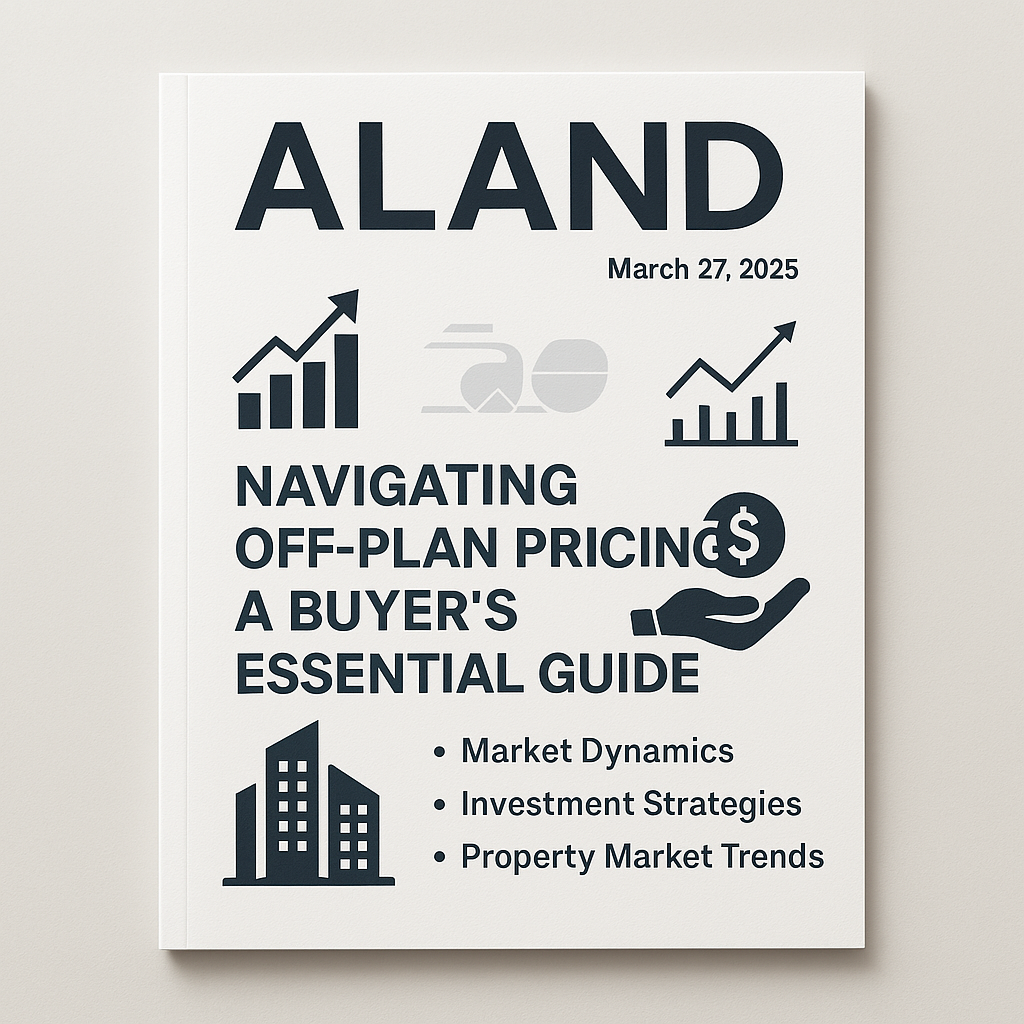Navigating Off-Plan Pricing: A Buyer’s Essential Guide
- Published Date: 27th Mar, 2025
-
5★ ★ ★ ★ ★(165)

Off-plan property investments have long been a go-to strategy for investors seeking to capitalize on early-stage market developments. However, understanding off-plan pricing dynamics is crucial for any buyer aiming to maximize return on investment while mitigating risk. The pricing strategy for off-plan developments can vary widely, influenced by a number of factors, including market cycles, developer strategies, and the nature of the property itself.
Key Factors Shaping Off-Plan Pricing
- Market Cycles & Economic IndicatorsOff-plan pricing often reflects broader market conditions and investor sentiment. Prices can be influenced by economic shifts, inflation trends, and interest rates. For example, when interest rates are low, the demand for new properties tends to increase, which can drive prices up. Conversely, in a high-interest-rate environment, developers may adopt more aggressive pricing to attract buyers despite lower demand. As a Swiss economist with a keen eye on macroeconomic signals, I often observe that off-plan projects are more sensitive to economic cycles compared to already completed properties. The anticipation of price changes in both the local and global markets is a critical determinant.
- Developer's Pricing StrategyDevelopers may adopt various pricing strategies depending on the stage of the project. In the early stages of development, pricing is often set lower to attract initial buyers and create momentum. As the project nears completion, prices typically increase due to reduced risk and the nearing visibility of the property’s value. Buyers can benefit from understanding how developers position their products within the market—whether as luxury units with a premium price or affordable options targeting first-time homeowners.
- Location & Demand AnalysisThe pricing of off-plan properties is deeply tied to the location of the development. For example, properties in prime locations with robust future infrastructure plans are likely to appreciate more rapidly than properties in areas with limited growth potential. Market data should be closely analyzed to assess not only current demand but also projected future growth in the area. Using tools like ALand's data-driven market insights platform can provide an invaluable edge in identifying high-potential areas before they hit the mainstream.
- Regulatory Environment & Government IncentivesGovernment policies, such as tax incentives for first-time homebuyers or changes to foreign investment rules, can significantly impact off-plan pricing. For instance, recent shifts in immigration and foreign investment policies in key global markets have driven demand for off-plan properties in certain regions. As a firm advocate for strategic market entry, understanding these regulatory frameworks is paramount. Tools like ALand’s audit and compliance services offer valuable support in understanding the legal landscape for foreign investors looking to navigate these complexities.
- Property Specifications & Development TimelineThe physical attributes of an off-plan property—such as square footage, amenities, and sustainable building practices—play a direct role in the initial pricing. Additionally, the timeline for completion can affect buyer confidence. For instance, projects with uncertain completion timelines or a history of delays may offer discounts to attract buyers, but they come with a higher level of risk. It’s essential for buyers to evaluate both the project’s tangible features and its track record before committing to a purchase.
Expert Insights on Off-Plan Pricing Dynamics
Understanding off-plan pricing isn’t simply about identifying the cheapest option on the market. As I often stress, real estate investments—especially in emerging markets or new developments—require a strategic, data-driven approach. Investors must weigh both short-term gains and long-term potential.
From my experience working with international investors, it’s clear that leveraging digital tools and data analytics can be a game-changer. Platforms like ALand are transforming how investors approach property investment decisions by providing insights into pricing trends, developer backgrounds, and market forecasts. This information allows investors to make more informed decisions and protect their capital from unpredictable market movements.
Actionable Steps for Buyers and Investors
- Perform In-Depth Market ResearchBefore diving into an off-plan investment, understand both macroeconomic indicators and specific local market dynamics. Leverage advanced digital tools like ALand’s platform to gather real-time data on market trends, pricing forecasts, and location-specific demand analysis.
- Evaluate Developer ReliabilityInvest in developers with a proven track record of delivering quality projects on time and within budget. This is a crucial step in mitigating the risk of project delays and price increases.
- Factor in Future Growth PotentialLocation is key. Analyze the future infrastructure projects planned for the area and how they align with your investment goals. Areas with planned developments such as new transportation links or commercial centers are more likely to see price increases post-completion.
- Understand Regulatory ChangesStay updated on relevant government policies, especially those that affect foreign investment, residency-by-investment programs, and tax laws. These factors can impact both your immediate purchase decision and long-term returns. ALand’s audit and compliance services provide crucial insights into navigating these evolving regulations.
- Negotiate Early-Bird DiscountsSince off-plan properties are usually priced lower at the start of a project, negotiating for a larger discount during the early stages can yield significant savings. Look for projects with flexible payment terms and options that align with your financial strategy.

